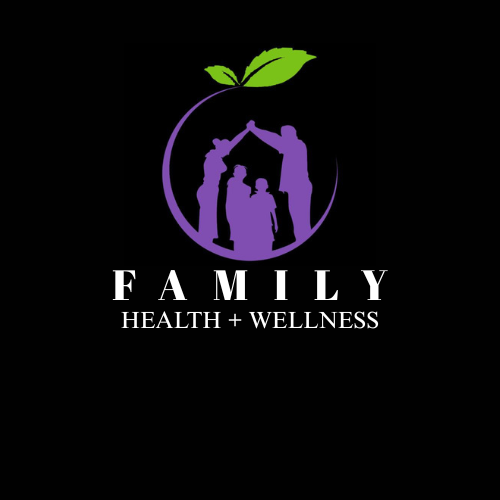Building a Stronger Future Through Family Health and Wellness
Introduction
Family health and wellness are not abstract. It is a way of life that impacts how every member of the family flourishes—body, mind, and spirit. In this busy world, it is increasingly critical to adopt habits of well-being daily. A healthy family sets a strong foundation for strength, bonding, and enduring happiness.
This handbook is committed to providing practical and sustainable solutions that support family health and wellness. Regardless of whether your purpose is to improve nutrition, enhance physical activity, or foster emotional bonding, the principles outlined here will help you make constructive changes in your home.
Why Family Health and Wellness Matters
Prevents Chronic Diseases
One of the best means of avoiding lifestyle diseases is by promoting good habits at an early age. When the whole family embraces a healthy diet and regular exercise, the risk of diabetes, obesity, and cardiovascular disease is dramatically reduced. Children nurtured in health-conscious families are more likely to carry on the habit as adults.
Supports Mental and Emotional Well-being
Emotional balance is part of family health and wellness as well. When family members are supported, heard, and loved, they have less stress. Open communication, quality time, and delegation of responsibilities can alleviate emotional burdens and enhance everyone’s mental clarity and confidence.
Nutrition: The Backbone of Wellness
Prioritize Whole Foods
Eat to fuel each system in the body. Emphasize whole foods like vegetables, fruits, lean proteins, whole grains, and healthy fats. Steer clear of processed foods that contain a lot of sugar, sodium, and oils that are not very healthy. Prepare meals together at home to make mealtime more interactive and informative.
Family Involvement in Meal Planning
Engage all members of the family in the meal planning process. Encourage children to pick healthy recipes. Educate them on how to read food labels. This not only ensures the family health and wellness but also empowers future generations to make healthy food choices.
Physical Activity as a Family Lifestyle
Make Movement a Daily Habit
Consistency is paramount when it comes to physical fitness. Get the movement integrated into family life. This might be a dinner walk, weekend walks, or dancing in the lounge. Physical activity does not need to be formal. It is about keeping everyone active.
Set Fun Challenges
Make your exercise routine more fun by gamifying it. Create mini challenges like seeing who can perform more push-ups or who can take the highest number of steps in a week. Give out small incentives to maintain the level of motivation. These activities enhance not just physical well-being but also family togetherness.
Emotional Wellness Within the Household
Open and Honest Communication
Communicating is the key to emotional health. Have regular weekly family check-ins in which everyone shares their experiences and feelings. Listen without critique. Prioritize communication, and every family member will feel safe and respected.
Create Tech-Free Zones
Technology tends to get in the way of quality family interaction. Establish tech-free times or spaces, particularly at the dinner table and bedtime. These breaks allow families to reconnect with each other, strengthening bonds and improving mental health.
Rest and Recovery Are Just As Important
Promote Healthy Sleep Routines
Rest is necessary for recovery, immune response, and brain function. Establish a regular bedtime for kids and adults. Restrict evening screen time and create relaxing bedtime routines such as reading or relaxation breathing.
Emphasize Downtime
Family health and wellness do not mean being constantly busy. Rest is also necessary. Provoke rest through hobbies, meditation, or time spent in nature. Educate children that rest is not sloth—it’s part of a healthy lifestyle.
Preventive Care and Regular Checkups
Stay Proactive About Health
Don’t wait until illness hits. Arrange for regular health checkups for all family members. Dental checkups, eye exams, and physical screenings are a must. Prevention works better—and sometimes is cheaper—than treatment.
Educate and Empower
Teach your family members the warning signs and symptoms of frequent health disorders. Make children learn about the practice of hygiene, drinking plenty of water, and safety measures. Education gives confidence and makes each member more responsible for their health.
Building a Wellness-Oriented Home Environment
Create a Positive Atmosphere
A tidy, well-organized, and serene home fosters mental clarity and emotional health. Fill your space with natural light, indoor plants, and soothing colors. Reduce mess and establish areas for exercise, study, and play.
Lead by Example
Children learn by example. If you make family health and wellness a priority in your daily life, your children will do the same. Be an example of consistency, discipline, and positivity. Actions will speak louder than words.
Long-Term Benefits of Prioritizing Wellness
When family health and wellness become part of your identity, the rewards are long-term. Families grow stronger, both physically and emotionally. Children grow up with values that guide them toward balanced living. Most importantly, the time spent together becomes more meaningful and joyful.
By making informed choices each day, your family creates resilience that spans generations. Wellness is not a place. It is a journey, and every step matters.
Conclusion
Integrating family health and well-being into daily life is not about being perfect. It is about intention, collaboration, and commitment. Start with tiny steps—eat one meal better, go for one walk, or have one conversation that matters. As time passes, the tiny steps create massive changes.
The health of your family is one of your greatest investments. Prioritize it today to build a healthier, happier tomorrow.







